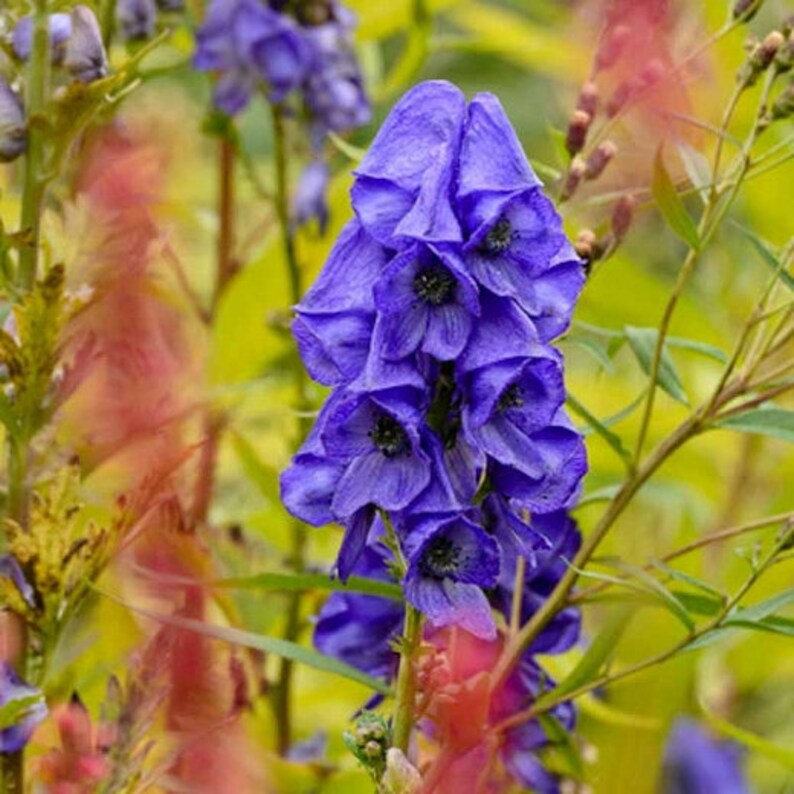

These are Albus, Ivorine, Sparks’ variety, Bicolor, Rubellum, Newry blue, and Scepter. Some of the varieties of Wolfsbane are used as ornamental plants when carefully handled. Colorful flowers seem attractive to the viewers.

Image Source: Home Stratosphere Other varieties of WolfsbaneĪlthough Wolfsbane is poisonous and it’s risky to handle but just because is appealing to colorful flowers many gardeners tends to plant it. Flowers are of dark blue to purple shades. It is native to mountains and its height is just 5 to 10 inches. The compound leaves are groups of 5 to 7 leaflets. It is equally poisonous to eat and to touch with open wounds. Aconitum NapellusĪccording to researchers, there are a further 9 sub-species recognized in Aconitum Napellus. Journal of the Iowa Academy of Science: JIAS, 1996. Some of the hybrids are designed for producing bi-colored flowers Kuchenreuther, M.A., The natural history of Aconitum noveboracense Gray (northern monkshood), a federally threatened species. Green, orange, and black flowers are not seen in the Aconitum species. Some of the species have also shown creamy and whitish flowers ranging from light yellow to grayish colors. Usually, blue and purple colors are seen in flowers. The main stem is erected and the fruit is called a follicle having multiple seeds when dried formed of the carpel. Two out of ten petals are large and curved and arranged in such a way to form a hood supported by a stalk. 2 to 10 petals are there covering the stems and nectaries (colorful part of stems acting as an attractant for insects helping in pollination). The one specification in flower morphology is its one-sided hood structure. This petiole helps a leaflet to twist in the direction getting more sunlight.

Leaves are attached to the stem with petioles. It has leaves with stipules (an outgrowth of leave at its base) and its edges may be smooth or irregular (palmate).

Some of the species and their hybrids are used as ornamental plants and have won gardening awards for this. Basic plant morphologyĪconitum napellus got many common names devils helmet, monkshood, queen of poisons, blue rocket, mouse-bane, and some people called it leopard’s bane as well.
#WOLFSBANE UPGRADES SKIN#
It causes burns and allergic irritations if one touches the flowers with an open wound on the skin Pullela, R., et al., A case of fatal aconitine poisoning by Monkshood ingestion. Death is certain in 4 to 6 hours if a large dosage (more than 20 ml) is taken. It rapidly decreases the heart rate which is the main reason for death in humans. It disturbs the gastrointestinal system especially, it upsets the stomach causing nausea, vomiting, diarrhea, and unconsciousness. The small quantity of the extract can prove deadly. In the myths, it is said that the extracts from its flowers help to weaken the vampires and werewolves. This is a poisonous plant for both animals and humans. These poisonous species are majorly found in mountains, Northern areas of America, Asia, and Europe. It does not only fight with these amazing creatures but also has other dark powers and many other secrets in it. The scientific name of the Wolf’s-bane plant is Aconitum napellus. This plant belongs to the family Aconitum which includes more than 250 species within it. It is said that the combat against the evil existence of werewolves can be won by this mythical plant and its flower commonly known as Wolf’s-bane.


 0 kommentar(er)
0 kommentar(er)
